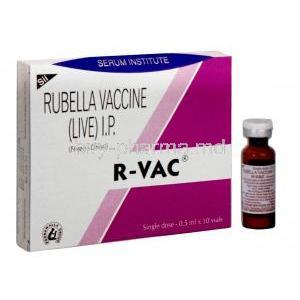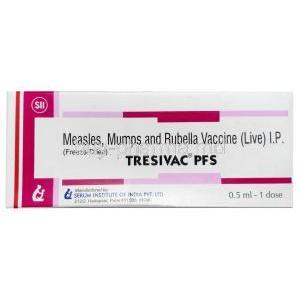1. Introduction to Cervarix Vaccine
The Cervarix vaccine is a bivalent vaccine that primarily targets human papillomavirus (HPV) types 16 and 18. These specific strains are responsible for a significant portion of cervical cancer cases worldwide. Cervarix plays a vital role in the prevention of HPV-related malignancies, providing long-lasting protection.
HPV vaccination is essential as it helps in reducing the incidence of cervical cancer, one of the leading causes of cancer-related mortality in women globally. By administering this vaccine, healthcare systems aim to dramatically lower the risk of HPV infections, which can lead to both cervical and other genital cancers.
Compared to other HPV vaccines, such as Gardasil, Cervarix focuses specifically on HPV types 16 and 18, while Gardasil offers broader protection against additional strains like HPV 6 and 11. Despite its narrower coverage, Cervarix has proven highly efficacious in preventing the most high-risk strains.
2. Composition of Cervarix Vaccine
Cervarix contains two active components: purified L1 proteins from HPV types 16 and 18, which are virus-like particles (VLPs) designed to stimulate the immune system. These components are critical for eliciting a protective response against HPV infection.
The inactive ingredients in Cervarix include various excipients such as sodium chloride, aluminum hydroxide, and water for injection. These play a crucial role in stabilizing the formulation and enhancing the immune response.
The adjuvant system used in Cervarix, AS04, consists of aluminum hydroxide and monophosphoryl lipid A (MPL). This unique adjuvant formulation boosts the vaccine's immunogenicity, ensuring a strong and durable immune response to HPV types 16 and 18.
3. How Cervarix Vaccine Works
Cervarix works by mimicking the HPV virus without causing infection. The L1 protein forms virus-like particles that the immune system recognizes as foreign. This leads to the production of antibodies that will protect against real HPV infections in the future.
Once vaccinated, individuals are provided with long-term immunity against HPV types 16 and 18. These two strains are the culprits behind approximately 70% of cervical cancer cases, making this vaccine highly valuable in cancer prevention efforts.
Unlike Gardasil, which protects against multiple HPV strains, Cervarix focuses exclusively on HPV types 16 and 18. Its narrower scope, however, does not undermine its effectiveness in cervical cancer prevention, as these strains are the most oncogenic.
4. Approved Uses of Cervarix Vaccine
- Prevention of cervical cancer caused by HPV types 16 and 18.
- Protection against other HPV-related cancers, such as vaginal and anal cancers.
- Effective for females starting from the age of 9 up to 45 years old.
Cervarix is predominantly used to prevent cervical cancer but also offers protection against other HPV-related malignancies, including vaginal and anal cancers. It is recommended for girls and young women aged 9 to 45. Early vaccination ensures maximal protection before the onset of sexual activity, when HPV exposure typically occurs.
5. Off-Label Uses of Cervarix Vaccine
Off-label, Cervarix has been considered for use in the prevention of HPV-related head and neck cancers. Though not officially approved for this indication, ongoing research is exploring its potential efficacy in reducing cancers in the oropharyngeal region, which are increasingly linked to HPV infections.
Globally, there are ongoing investigations into Cervarix’s broader protective capabilities. Some studies suggest that Cervarix may offer cross-protection against non-vaccine HPV types, further enhancing its value beyond its approved uses.
6. Dosage and Administration of Cervarix Vaccine
- The standard dosing schedule involves two doses for individuals aged 9-14 years, spaced six months apart.
- For those aged 15 years and above, a three-dose regimen is required at 0, 1, and 6 months.
- Administered intramuscularly in the deltoid muscle of the upper arm.
Dosage adjustments may be required based on age, health conditions, or other specific medical recommendations. In some cases, individuals with compromised immune systems may benefit from an alternative dosing schedule.
7. Cervarix Vaccine Side Effects
While Cervarix is generally well-tolerated, like all vaccines, it can cause some side effects. Most side effects are mild and short-lived, but serious adverse reactions can occur, albeit rarely.
Common immediate reactions include pain at the injection site, fatigue, and headaches. Long-term safety studies have consistently shown that the vaccine is safe, with no significant increase in severe adverse events.
8. Common Side Effects of Cervarix Vaccine
- Pain, redness, or swelling at the injection site.
- Fatigue, headaches, or low-grade fever.
- Nausea or dizziness in some individuals.
Managing these side effects can be straightforward. Pain at the injection site can be alleviated with a cold compress, while over-the-counter medications such as acetaminophen can be used for headache or fever management.
9. Serious Side Effects and Complications
Although rare, serious allergic reactions to Cervarix, such as anaphylaxis, can occur. Symptoms of anaphylaxis include difficulty breathing, swelling of the face, and a rapid heart rate, necessitating immediate medical attention.
There have been isolated reports of neurological conditions, such as Guillain-Barré syndrome (GBS), following HPV vaccination. However, the causal link between GBS and the Cervarix vaccine remains unproven. Post-vaccination monitoring for any adverse effects is crucial to ensuring patient safety.
10. Interactions with Other Vaccines and Medications
Cervarix, like other vaccines, may interact with other immunizations or medications administered concurrently. It is generally safe to co-administer Cervarix with vaccines such as flu shots, without compromising the immune response or causing any adverse effects. However, the immune system’s ability to respond may vary depending on individual health conditions and other treatments.
Certain medications, particularly those that suppress the immune system (e.g., corticosteroids or immunosuppressive therapies), can reduce the efficacy of Cervarix. These drugs may impair the body's ability to mount an adequate response to the vaccine, potentially limiting its protective benefits.
- Co-administration with routine vaccines (e.g., influenza, tetanus) is generally safe.
- Immunosuppressive medications may affect the vaccine’s efficacy.
- Ensure appropriate timing when scheduling multiple vaccines.
Timing considerations are essential when administering multiple vaccines or medications. In cases where individuals are receiving other immunizations, it is advisable to follow established guidelines to ensure optimal immune responses without overburdening the immune system.
11. Warnings and Precautions
Before receiving Cervarix, certain general precautions must be taken into account to ensure the safety and efficacy of the vaccination process. Individuals with known hypersensitivity to any component of the vaccine, such as its adjuvant system, should avoid its use. Reactions to vaccine components can lead to severe outcomes, making it imperative to screen individuals prior to administration.
In severely immunocompromised individuals, such as those undergoing chemotherapy or individuals with HIV, the efficacy of the vaccine may be reduced. Careful consideration and consultation with healthcare professionals are required in these cases.
- Screen for hypersensitivity to vaccine ingredients.
- Avoid in individuals with severe immunodeficiency conditions.
- Postpone vaccination during acute illness or fever.
In the event of acute illness, such as fever or systemic infection, it is prudent to delay vaccination until the individual has fully recovered to ensure the immune system can respond effectively.
12. Contraindications for Cervarix Vaccine
Absolute contraindications for Cervarix include individuals who have experienced severe allergic reactions (e.g., anaphylaxis) to any ingredient in the vaccine. Such reactions, while rare, can be life-threatening and warrant immediate medical intervention.
In addition, vaccination should be postponed in individuals currently experiencing acute infections or high fever. Administering the vaccine during a febrile illness may not only reduce its effectiveness but also increase the likelihood of side effects.
- Severe allergic reactions (e.g., anaphylaxis) to any ingredient in Cervarix.
- Delay in the presence of acute febrile illness or infection.
- Previous adverse reactions to HPV vaccines necessitate caution.
Individuals who have had adverse reactions to other HPV vaccines may also exhibit contraindications, and careful medical evaluation should be undertaken before considering further doses of Cervarix.
13. Administration to Specific Populations
a. Administration to Children and Adolescents
Vaccination with Cervarix is recommended starting at the age of 9, as this age group benefits from receiving the vaccine before potential exposure to HPV through sexual contact. The vaccine has been shown to be highly efficacious in younger populations, providing robust immunity that can protect individuals for years to come.
- Recommended starting age for Cervarix vaccination: 9 years.
- Effective in preventing HPV infection in adolescents.
- Safety profile is well-established in this population.
b. Administration to Pregnant Women and Nursing Mothers
Current recommendations suggest that Cervarix should not be routinely administered during pregnancy due to the lack of sufficient data on its effects in this population. If a woman becomes pregnant after receiving one or more doses of Cervarix, the remaining doses should be postponed until after pregnancy.
For breastfeeding mothers, there are no specific contraindications, and the vaccine is generally considered safe. However, as with any medical treatment, it is advisable to consult with healthcare providers before administration.
- Not recommended for routine use during pregnancy.
- Safe for use in breastfeeding mothers.
- Consultation with healthcare providers is recommended.
c. Administration to the Elderly
While the primary target population for Cervarix is younger individuals, data on its efficacy and safety in the elderly is limited. Older adults may still benefit from the vaccine, particularly if they are at risk for HPV infection. However, the immune response in older individuals may be less robust than in younger populations.
- Limited data on use in elderly populations.
- Possible benefit for those at risk of HPV infection.
- Consult healthcare providers for individualized recommendations.
14. Overdose and Emergency Measures
An overdose of Cervarix is highly unlikely, but in the rare event that more than the recommended dose is administered, the effects are generally minimal. Most cases of vaccine overdose do not result in serious complications.
In the event of an overdose, monitoring the individual for any unexpected side effects is advisable. If symptoms such as severe allergic reactions or systemic effects occur, medical intervention should be sought immediately.
- Vaccine overdose is rare and typically not serious.
- Monitor for any adverse effects post-overdose.
- Emergency interventions are available in extreme cases.
15. Storage and Handling of Cervarix Vaccine
Proper storage conditions are crucial to maintaining the efficacy of the Cervarix vaccine. It should be stored between 2°C and 8°C, away from direct sunlight and freezing temperatures. Exposure to excessive heat or freezing can degrade the vaccine and render it ineffective.
During transportation, the vaccine must be kept within the appropriate temperature range to ensure its potency. Proper handling precautions, including the use of insulated containers and thermometers, are essential to preserving its integrity.
- Store at 2°C to 8°C, avoiding freezing.
- Keep away from direct sunlight and excessive heat.
- Follow strict guidelines during transportation to maintain efficacy.
16. Important Handling Precautions
Healthcare professionals must adhere to strict guidelines when handling the Cervarix vaccine. Sterile techniques should be used to prevent contamination, and the vaccine should be prepared just prior to administration to ensure safety and efficacy.
Proper disposal of unused vaccine and medical waste, such as syringes and needles, is mandatory. This not only prevents contamination but also ensures compliance with safety regulations.
- Use sterile techniques to avoid contamination.
- Prepare the vaccine immediately before administration.
- Dispose of medical waste according to safety regulations.
17. Important Precautions After Vaccination
After receiving the Cervarix vaccine, individuals should be monitored for any adverse reactions. While serious reactions are rare, healthcare providers typically observe patients for 15 to 30 minutes post-vaccination to ensure immediate allergic reactions do not occur.
Patients should be informed about potential side effects and advised on how to manage them. Follow-up schedules, including any necessary booster doses, should be clearly communicated to ensure long-term immunity.
- Monitor patients for 15-30 minutes post-vaccination.
- Inform patients about common side effects and management.
- Ensure follow-up schedules and booster doses are followed.



